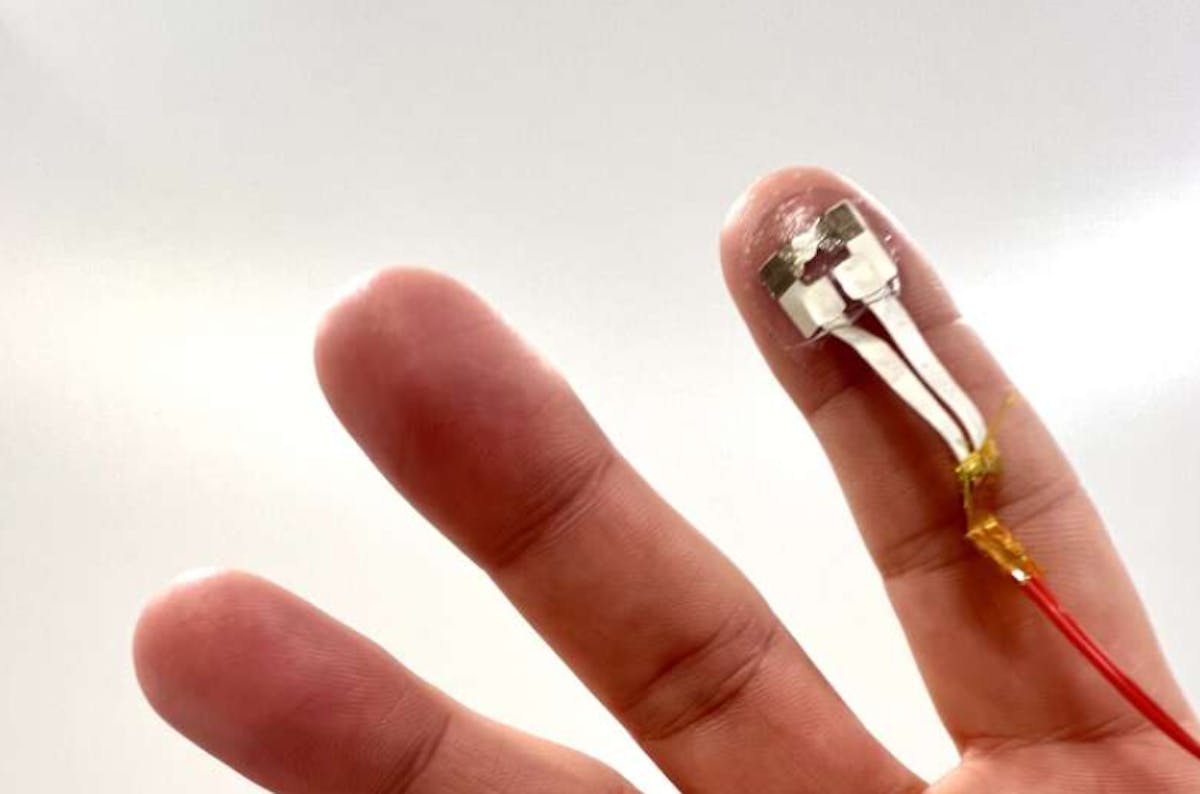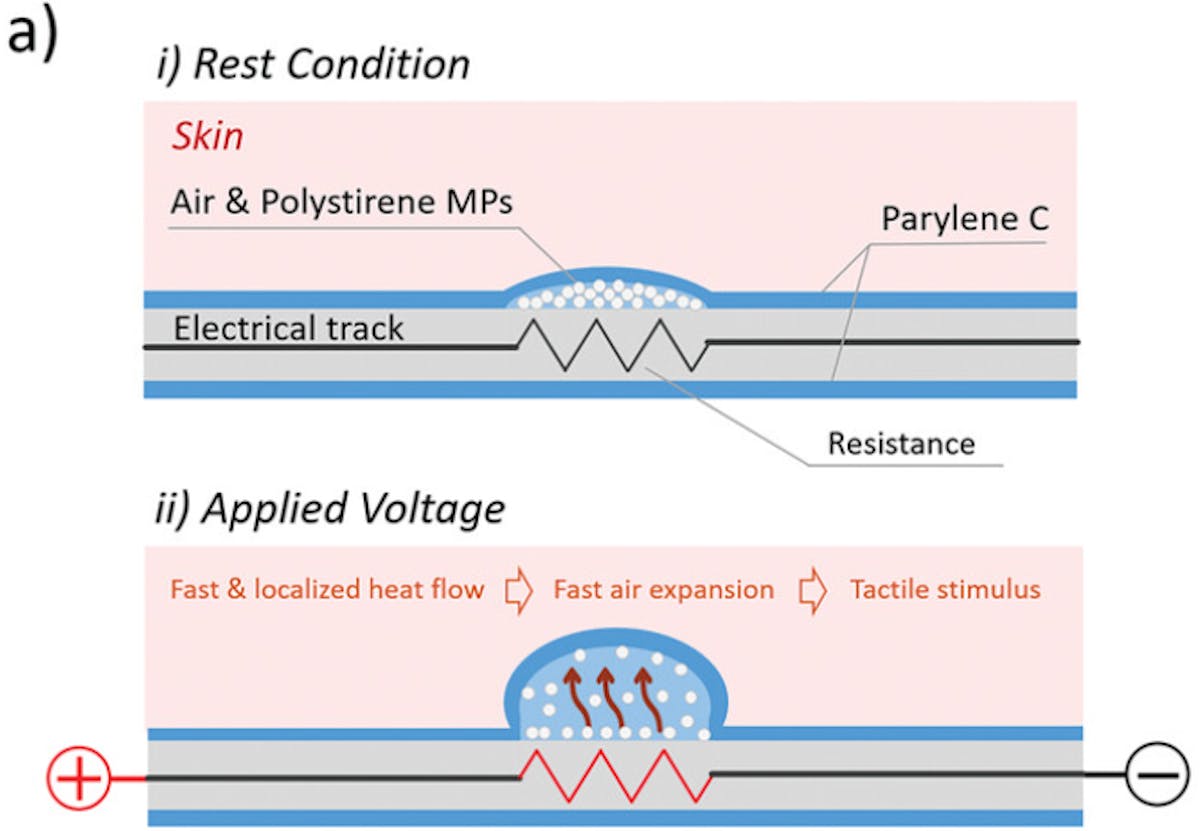A Light Touch
An ultra-thin electronic tattoo adds the sensation of touch to virtual objects with an electro-thermo-pneumatic actuation system.

Advancements in tactile interface technologies offer the promise of greatly enhancing human-machine interactions, paving the way for more nuanced and immersive engagements between individuals and their digital surroundings. Tactile feedback, which involves the sense of touch, is a critical component in bridging the gap between the virtual and physical worlds. While traditional tactile feedback devices have demonstrated their efficacy, their bulky and rigid nature has hindered widespread adoption, limiting their practicality in real-world scenarios.
In recent years, significant strides have been made in the development of conformable electronics, a promising avenue that holds the potential to revolutionize tactile feedback devices. Unlike their cumbersome counterparts, conformable electronics are characterized by their thin, flexible, and pliable nature, allowing them to seamlessly conform to the contours of the human body. This inherent flexibility makes them ideal candidates for creating tactile interfaces that can be integrated into clothing, accessories, or even directly onto the skin, providing a more natural and unobtrusive user experience.
These advancements in conformable electronics are poised to unlock a myriad of possibilities across various domains. In the realm of virtual reality, for instance, conformable tactile interfaces could enhance immersion by simulating a wide range of sensations, from the gentle caress of a breeze to the impact of a virtual object. Beyond entertainment, this technology holds promise in healthcare, rehabilitation, and training simulations, where realistic tactile feedback is crucial for effective outcomes.

A pair of researchers at the Center for Materials Interfaces have taken notice of the new possibilities enabled by advancements in conformable electronics, and have leveraged these advances to create a new type of tactile interface. Their ultra-thin tattoo-like device can be adhered to the fingertip to artificially stimulate the sense of touch. The device is so unobtrusive as to be hardly detectable by the wearer, which could make it suitable for daily use in a wide range of applications.
Rather than relying on vibrotactile or electrical stimulation, which is very common among tactile interfaces, the team chose to implement an electro-thermo-pneumatic actuation system. In this way, tiny amounts of electricity are used to quickly heat air that is confined within a thin membrane, which causes it to expand and provide stimulation to the skin that it is attached to. In theory, an array of these actuators could allow complex sensations to be recreated artificially, however, in this study only a single actuator was included in the proof of concept device.
The device was manufactured on a substrate of temporary transfer tattoo paper, which allows it to be attached to curved, irregular surfaces like human skin. An inkjet printer was utilized to deposit traces of conductive silver ink on the tattoo paper to carry electrical currents. To create the enclosed bubble of air, polystyrene microparticles were affixed to the substrate, then were coated with a thin parylene layer. These techniques allowed the researchers to create an interface that was only a few micrometers in thickness.
To activate the tactile pixel, approximately 145 mW of power is needed. This generates sufficient heat to cause expansion of the confined air within a period of 100 milliseconds.
A single volunteer was asked to test out the device after having the electronic tattoo transferred to their fingertip. The researchers then experimented with different voltage levels to see when the sensations would become noticeable. It was discovered that at 1.3 volts, the individual could detect 90% of the actuations of the tactile pixel. It is notable, however, that in the course of this experiment it was found that only 60% of the devices survived the transfer from the tattoo paper to the fingertip — the thinness of the device seems to also make it quite fragile.
A single pixel is of limited value, however, these techniques could in theory be extended to produce an interface with more pixels. It is unclear what the maximum resolution of such a system would be at this time. More experimentation will be needed to determine exactly what these devices are capable of.
R&D, creativity, and building the next big thing you never knew you wanted are my specialties.

